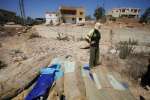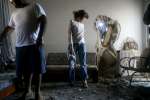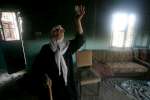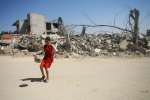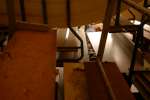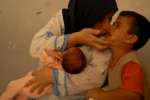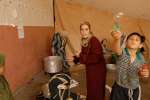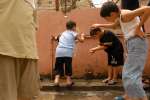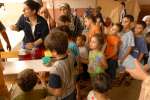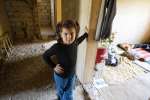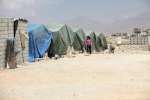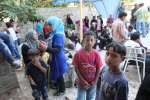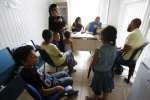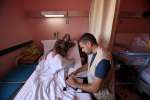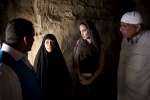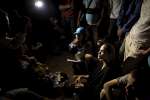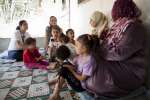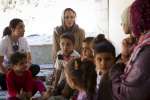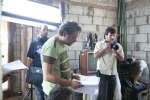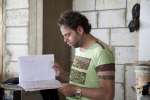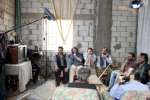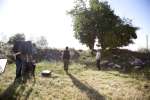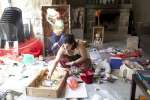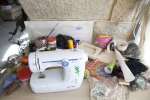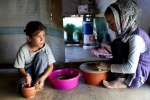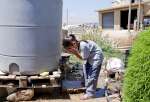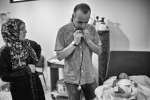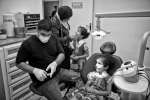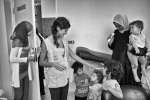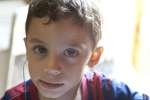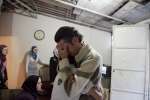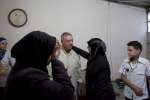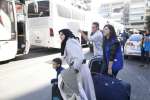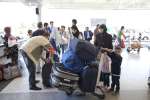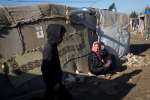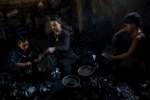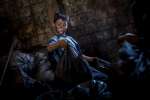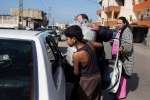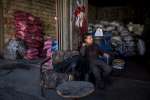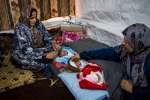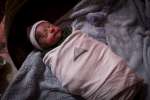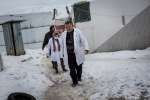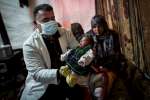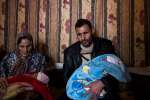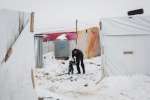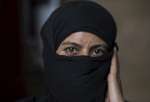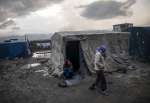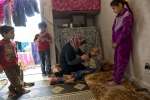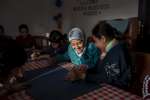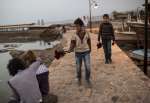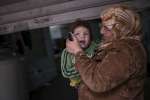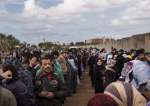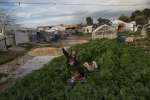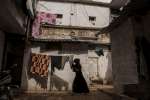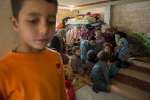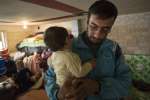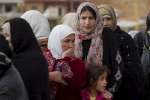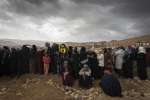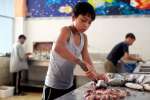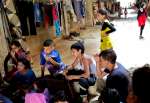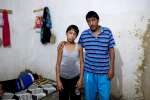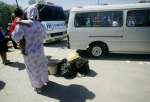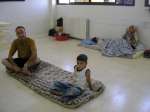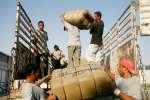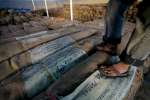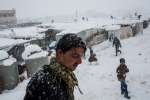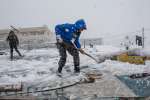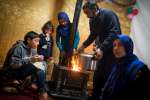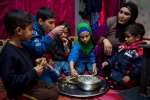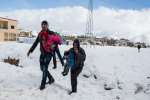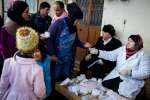
Lebanon 
2015 UNHCR country operations profile - Lebanon
| Overview |
Working environment
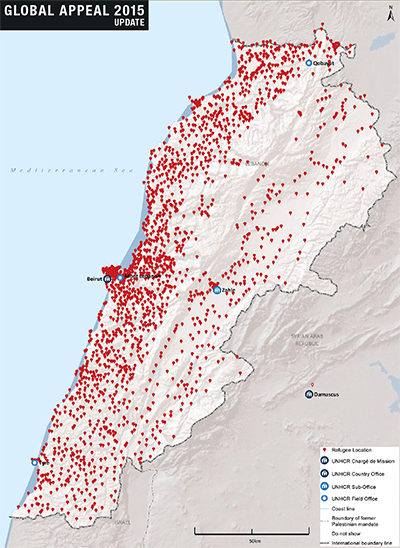
-
The impact of the Syrian crisis - including on the economy, demographics, political instability, and security - continues to deepen across Lebanon. With more than 1.3 million refugees expected by the beginning of 2015, Lebanon's exceptional hospitality will be extremely stretched.
-
The Government has established an inter-ministerial crisis cell, confirming its pro-active engagement in refugee issues. While the country is not party to the 1951 Refugee Convention, and despite restrictions imposed at the border, it is expected that Syrians in need of immediate protection and assistance will continue to find safe haven in Lebanon.
-
Refugees have access to most basic services through public institutions, where the authorities continue to play an active role in facilitating response coordination and planning.
-
Syrian refugees, like the Lebanese in local communities most affected by the influx, are becoming increasingly vulnerable, despite the large-scale inter-agency response to date. Humanitarian needs show little signs of abating. As their displacement extends and their savings deplete, refugees' socio-economic vulnerability increases.
-
An effective display of international solidarity and support is vital for Lebanon, which has received the highest number of Syrian refugees in the world. Failing this, the country's capacity to respond and withstand the Syria crisis will be severely tested.
People of concern
Syrians fleeing conflict continue to make up the majority of refugees in Lebanon. According to current projections, there will be over 1.3 million registered Syrian refugees in Lebanon at the start of 2015.
Asylum-seekers from Iraq continue to make up the majority of new registrations among non-Syrians. Developments in Iraq have led to a significant increase in registration requests since June 2014.
It is estimated that there are tens of thousands of stateless people in Lebanon. Syrian refugees born in Lebanon are particularly at risk. A 2014 survey of 5,779 Syrian newborns found that 72 per cent do not possess an official birth certificate, raising concerns over the recognition of their nationality by the Syrian authorities.
| Type of population |
Origin |
January 2015 |
December 2015 |
| Total in country |
Of whom assisted
by UNHCR |
Total in country |
Of whom assisted
by UNHCR |
| Total |
1,445,620 |
1,445,620 |
1,846,150 |
1,846,150 |
| Refugees |
Iraq |
6,100 |
6,100 |
6,100 |
6,100 |
| Sudan |
170 |
170 |
170 |
170 |
| Syrian Arab Rep. |
1,435,840 |
1,435,840 |
1,835,840 |
1,835,840 |
| Various |
250 |
250 |
250 |
250 |
| Asylum-seekers |
Iraq |
2,500 |
2,500 |
3,000 |
3,000 |
| Sudan |
270 |
270 |
300 |
300 |
| Various |
500 |
500 |
500 |
500 |
| Response |
Needs and strategies
UNHCR's overarching strategy in Lebanon remains to protect, assist and facilitate solutions for refugees and other people of concern, through close partnership with the Government, the judiciary, the UN Country Team, donors, NGOs and partners, and the refugees themselves.
UNHCR will focus its activities on: the overall coordination of the Syrian refugee crisis; registration; protection monitoring and outreach activities; resettlement and humanitarian admission; provision of cash grants, shelter and access to health and education.
Moreover, together with partners, the Office will support host communities and authorities to mitigate the direct impact of the presence of the refugees in order to ensure a more favourable protection environment. UNHCR will support the Government in improving central and local actors' ability to provide refugees with basic services, as well as to prevent statelessness in Lebanon. Finding solutions outside of Lebanon for the most vulnerable refugees will remain a priority.
| Implementation |
Coordination
The Regional Refugee and Resilience Plan (3RP) will be the main forum for partners to plan, coordinate and report on the refugee response. UNHCR and UNDP will support the Government in leading the refugee and resilience components, respectively.
Relationships with all donors, including non-traditional and private, will continue to be nurtured. UNHCR will continue to expand its partnerships with local partners, and in efforts too prevent statelessness, the Office will collaborate closely with the Ministry of the Interior.
| Implementing partners |
| Government agencies: Ministry of Social Affairs NGOs: |
| NGOs: Action Against Hunger, Agence d'aide à la coopération technique et au développement, Al Majmoua, Amel Association, AJEM, Caritas Migrant Centre, Cooperative Housing Foundation, Comitato Internazionale per lo Sviluppo dei Popoli, Concern, Global Communities, Cooperazione Internationale, Danish Refugee Council, Dar El Fatwa, International Alert, International Medical Corps, International Orthodox Christian Charities, International Relief and Development, International Rescue Committee, INTERSOS, Islamic Relief, Makhzoumi Foundation, Medair, Mercy Corps, Norwegian Refugee Council, Oxfam, Polish Center for International Aid, Première Urgence - Aide Médicale Internationale, RESTART, Right To Play, Save the Children International, Search for Common Ground, SHIELD, Solidar, Terre des Hommes, War Child Holland, World Vision International |
| Others: UNDP, UN-HABITAT, UNOPS, WHO |
| Note: Selection of implementing partners for 2015 is still under discussion. |
| Operational partners |
| Government agencies: High Relief Commission, Parliament's Human Rights Committee, Ministry of Education and Higher Education, Ministry of the Interior and Municipalities, Ministry of Justice, Ministry of Public Health |
| NGOs: ActionAid Denmark, ALPHA, Associazione Volontari per il Servizio Internazionale, Center for Victims of Torture, Fundación Promocíon Social de la Cultura, GVC/Muslim Aid, Handicap International, Heartland Alliance International, Lebanese Red Cross, Makassed, Médecins du Monde, Refugee Education Trust, Relief International, René Moawad Foundation, Safadi Foundation, Terre des Hommes Lausanne, World Rehabilitation Fund, YMCA |
| Others: FAO, ICRC, IFRC, ILO, IOM, Lebanese Red Cross, OCHA, OHCHR, UNESCO, UNFPA, UNICEF,UNODC, UNRWA, UNSCOL, UNWOMEN, WFP |
| Financial information |
The financial requirements for UNHCR's operation in Lebanon continue to increase, in line with population trends and greater vulnerabilities resulting largely from the Syrian refugee influx: from USD 13.7 million in 2011 to a revised budget of USD 471.9 million in 2014.
For 2015, the budget is set at USD 556.8 million, largely to respond to the Syria situation. In light of the evolving situation in the Syrian Arab Republic and in Iraq, any changes in requirements will be presented in the 2015 Regional Refugee and Resilience Plan (3RP) for the Syria situation and in a Supplementary Appeal for the Iraq situation.
Source: UNHCR Global Appeal 2015 Update
UNHCR contact information
UNHCR contact information
|
| Residing in Lebanon [1] |
|---|
| Refugees [2] | 1,154,040 |
|---|
| Asylum Seekers [3] | 7,434 |
|---|
| Returned Refugees [4] | 0 |
|---|
| Internally Displaced Persons (IDPs) [5] | 0 |
|---|
| Returned IDPs [6] | 0 |
|---|
| Stateless Persons [7] | 0 |
|---|
| Various [8] | 5,705 |
|---|
| Total Population of Concern | 1,167,179 |
|---|
| Originating from Lebanon [1] |
|---|
| Refugees [2] | 4,272 |
|---|
| Asylum Seekers [3] | 3,838 |
|---|
| Returned Refugees [4] | 0 |
|---|
| Internally Displaced Persons (IDPs) [5] | 0 |
|---|
| Returned IDPs [6] | 0 |
|---|
| Various [8] | 0 |
|---|
| Total Population of Concern | 8,110 |
|---|
|
| Contributions since 2000 |
|---|
| Year | USD |
|---|
| 2014 | 0 |
|---|
| 2013 | 0 |
|---|
| 2012 | 0 |
|---|
| 2011 | 0 |
|---|
| 2010 | 0 |
|---|
| 2009 | 0 |
|---|
| 2008 | 0 |
|---|
| 2007 | 0 |
|---|
| 2006 | 73,000 |
|---|
| 2005 | 0 |
|---|
| 2004 | 0 |
|---|
| 2003 | 0 |
|---|
| 2002 | 0 |
|---|
| 2001 | 0 |
|---|
| 2000 | 0 |
|---|
|
| Contributions since 2006 |
|---|
| Year | USD |
|---|
| 2014 |  50,000 As at 15 January 2015 |
|---|
| 2013 | 53,000 |
|---|
| 2012 | 0 |
|---|
| 2011 | 0 |
|---|
| 2010 | 0 |
|---|
| 2009 | 0 |
|---|
| 2008 | 0 |
|---|
| 2007 | 0 |
|---|
| 2006 | 0 |
|---|
Weekly updates on UNHCR's operation in Lebanon.
- UN Inter-Agency Update on Syria Situation Response in Lebanon, Monthly Overview, May 2013
- UN Inter-Agency Response for Syrian Refugees in Lebanon, May 17 - May 24, 2013
- UN Inter-Agency Response for Syrian Refugees in Lebanon, May 10 - May 17, 2013
- UN Inter-Agency Response for Syrian Refugees in Lebanon, May 3 - May 10, 2013
- UN Inter-Agency Update on Syria Situation Response in Lebanon, Monthly Overview, April 2013
more documents2008 Nansen Refugee Award
The UN refugee agency has named the British coordinator of a UN-run mine clearance programme in southern Lebanon and his civilian staff, including almost 1,000 Lebanese mine clearers, as the winners of the 2008 Nansen Refugee Award.
Christopher Clark, a former officer with the British armed forces, became manager of the UN Mine Action Coordination Centre-South Lebanon (UNMACC-SL) n 2003. His teams have detected and destroyed tons of unexploded ordnance (UXO) and tens of thousands of mines. This includes almost 145,000 submunitions (bomblets from cluster-bombs) found in southern Lebanon since the five-week war of mid-2006.
Their work helped enable the return home of almost 1 million Lebanese uprooted by the conflict. But there has been a cost – 13 mine clearers have been killed, while a further 38 have suffered cluster-bomb injuries since 2006. Southern Lebanon is once more thriving with life and industry, while the process of reconstruction continues apace thanks, in large part, to the work of the 2008 Nansen Award winners.
2008 Nansen Refugee Award
Lebanese Returnees Receive Aid
UNHCR started distributing emergency relief aid in devastated southern Lebanese villages in the second half of August. Items such as tents, plastic sheeting and blankets are being distributed to the most vulnerable. UNHCR supplies are being taken from stockpiles in Beirut, Sidon and Tyre and continue to arrive in Lebanon by air, sea and road.
Although 90 percent of the displaced returned within days of the August 14 ceasefire, many Lebanese have been unable to move back into their homes and have been staying with family or in shelters, while a few thousand have remained in Syria.
Since the crisis began in mid-July, UNHCR has moved 1,553 tons of supplies into Syria and Lebanon for the victims of the fighting. That has included nearly 15,000 tents, 154,510 blankets, 53,633 mattresses and 13,474 kitchen sets. The refugee agency has imported five trucks and 15 more are en route.
Posted on 29 August 2006
Lebanese Returnees Receive Aid
Lebanon Crisis: UNHCR Gears Up
The UN refugee agency is gearing up for a multi-million-dollar operation in the Middle East aimed at assisting tens of thousands of people displaced by the current crisis in Lebanon.
Conditions for fleeing Lebanese seeking refuge in the mountain areas north of Beirut are precarious, with relief supplies needed urgently to cope with the growing number of displaced. More than 80,0000 people have fled to the Aley valley north of Beirut. Some 38,000 of them are living in schools.
In close collaboration with local authorities, UNHCR teams have been working in the mountain regions since early last week, assessing the situation and buying supplies, particularly mattresses, to help ease the strain on those living in public buildings.
Lebanon Crisis: UNHCR Gears Up
Syrian Refugees in Lebanon
As world concern grows over the plight of hundreds of thousands of displaced Syrians, including more than 200,000 refugees, UNHCR staff are working around the clock to provide vital assistance in neighbouring countries. At the political level, UN High Commissioner for Refugees António Guterres was due on Thursday (August 30) to address a closed UN Security Council session on Syria.
Large numbers have crossed into Lebanon to escape the violence in Syria. By the end of August, more than 53,000 Syrians across Lebanon had registered or received appointments to be registered. UNHCR's operations for Syrian refugees in Tripoli and the Bekaa Valley resumed on August 28 after being briefly suspended due to insecurity.
Many of the refugees are staying with host families in some of the poorest areas of Lebanon or in public buildings, including schools. This is a concern as the school year starts soon. UNHCR is urgently looking for alternative shelter. The majority of the people looking for safety in Lebanon are from Homs, Aleppo and Daraa and more than half are aged under 18. As the conflict in Syria continues, the situation of the displaced Syrians in Lebanon remains precarious.
Syrian Refugees in Lebanon
Angelina Jolie visits Syrian and Iraqi refugees in the Middle East
In her new role as UNHCR Special Envoy, Angelina Jolie has made five trips to visit refugees so far this year. She travelled to Jordan, Lebanon and Turkey in September 2012 to meet some of the tens of thousands of Syrians who have fled conflict in their homeland and sought shelter in neighbouring countries. Jolie wrapped up her Middle East visit in Iraq, where she met Syrian refugees in the north as well as internally displaced Iraqis and refugee returnees to Baghdad.
The following unpublished photos were taken during her visit to the Middle East and show her meeting with Syrian and Iraqi refugees.
Angelina Jolie visits Syrian and Iraqi refugees in the Middle East
Syria's Soap Makers Continue Ramadan Tradition in Lebanon
TV soap operas are a staple of Ramadan across the Arab world, and those made in Syria are particularly famous and popular around the region. The war in Syria has halted most productions, but some cast and crews are continuing the tradition and filming new dramas for the small screen in Lebanon.
In general, the stories are about Arab heroes and celebrated battles and are an integral - and highly anticipated - part of Ramadan. Acclaimed photographer Elena Dorfman, on assignment for UNHCR, followed the crews of two soaps on location in Lebanon.
In these images, she focuses on director Saifeddine Al Sibaii's making his latest soap, "Al Wilada Min Al Khasira" ("Giving birth from the hip"), and on female director Abeer Esber as she films the Ramadan drama, "Al Obour" ("The Transition") in a mountainous region of Lebanon.
Syria's Soap Makers Continue Ramadan Tradition in Lebanon
Refugee Syrian Artists Get Some Room of their Own
When Raghad Mardini first set eyes on the crumbling, war-scarred Ottoman coach house in the mountains above Beirut she saw potential. Trained as a civil engineer in her native Syria, she knew how to put the bones back together and spent a year lovingly restoring the structure, which had been badly damaged during Lebanon's 1975-90 civil war. She also knew the potential of the rudderless young Syrian artists recently displaced by the tragic war in their country, who needed her help in navigating Beirut, where they had all fled. With the coach house finished and standing empty, she decided it would make an ideal studio and sanctuary for the young, artistic refugees. She set up the Art Residence Aley so that they could produce and create once more. Photographer Elena Dorfman, who is working for UNHCR in the Lebanon, visited the retreat in the small town of Aley. These are some of the images she took.
Refugee Syrian Artists Get Some Room of their Own
Syria's Latest Grim Statistic: One Million Children in Exile
With Syria's civil war well into its third year, the United Nations estimates that there are now more than 1 million Syrian children living outside their country as refugees. They include eight-year-old Aya, who was forced to flee with her family to Lebanon in 2011. They now live in an informal settlement with more than a thousand other refugees, surrounded by tomato, pepper and carrot fields in the fertile Bekaa Valley. The young girl is curious about everything and loves to learn, but she hasn't been able to go to school for most of the past two years. She dreams of studying and wants to become a paediatrician one day. But her father is sick and unemployed and cannot afford the monthly fee of US$20 for the bus to the nearest school. While her siblings work in the fields to make money, Aya stays behind to care for her sister Labiba, aged 11, who lives with disability. Her family says Aya is tough, but also has a very sunny disposition that rubs off on others.
Syria's Latest Grim Statistic: One Million Children in Exile
Kuwaiti Funds Provide Vital Medical Aid for Syrians in Lebanon
As the number of Syrian refugees in Lebanon continues to grow, ensuring access to quality health care is becoming an increasing challenge for humanitarian aid groups and the international community. So, Kuwait's unprecedented donation in April of US$110 million for UNHCR's Syria crisis operations this year came at a most opportune time. Slightly more than 40 per cent of the amount has been used to fund programmes in Lebanon, including the provision of vital - and often life-saving - medical care. In the following photo gallery, photographer Shawn Baldwin looks at the essential work being done in just one Kuwaiti-supported clinic in northern Lebanon. The small Al Nahda Primary Health Care Clinic in the town of Beddawi has a staff of seven doctors and one nurse. Between 600 and 700 people seek medical attention there every month and the clinic meets the needs of some of the most vulnerable refugees.
Kuwaiti Funds Provide Vital Medical Aid for Syrians in Lebanon
Through the Clouds to Germany: One Syrian Family's Journey
On Wednesday, Germany launched a humanitarian programme to provide temporary shelter and safety to up to 5,000 of the most vulnerable Syrian refugees in neighbouring countries. A first group of 107 flew to Hanover in the northern city of Hanover. They will attend cultural orientation courses to prepare them for life over the next two years in Germany, where they will be able to work, study and access basic services. Among the group are Ahmad and his family, including a son who is deaf and needs constant care that was not available in Lebanon. The family fled from Syria in late 2012 after life became too dangerous and too costly in the city of Aleppo, where Ahmad sold car spare parts. Photographer Elena Dorfman followed the family in Beirut as they prepared to depart for the airport and their journey to Germany.
Through the Clouds to Germany: One Syrian Family's Journey
A Bleak Milestone in Lebanon, Visualized
The number of refugees fleeing from Syria into neighbouring Lebanon passed the 1 million mark today, a bleak milestone exacerbated by rapidly depleting resources and a host community stretched to breaking point.
A Bleak Milestone in Lebanon, Visualized
The Charcoal Boys: Child Labour in Lebanon
Bebnine is one of many small towns in northern Lebanon that have seen an influx of Syrian refugees in recent months. Many of the new residents are children, whose education has been disrupted. A lot of them must work to support their families instead of studying to lay the foundations for a bright future. This set of photographs by Andrew McConnell, documents one group of boys who risk their health by working for a charcoal seller in Bebnine. Aged between 11 and 15 years old, they earn the equivalent of less than 70 US cents an hour filling, weighing and carrying sacks of charcoal. It's hard work and after an average eight-hour day they are covered in charcoal dust. Throughout the region, an estimated one in ten Syrian refugee children is engaged in child labour.
The Charcoal Boys: Child Labour in Lebanon
The Winter Triplets: a Bitter Sweet New Year's Tale
The birth of triplets on New Year's Day in eastern Lebanon's Bekaa Valley should have been cause for celebration, but there was a terrible cost attached. The newborns' mother, Syrian refugee Amal, died shortly after giving birth, never having a chance to see her boys.
In a twist of fate, Amal's own mother had died giving birth to her. Amal, whose name means "hope," had been excited at the prospect of having triplets and had been confident about the birth. She named the three boys before they were born - Riyadh, Ahmed and Khaled - and told her husband to take good care of them in case anything happened to her.
The weather in the Bekaa Valley seemed to reflect the torment of Amal's family. Less than a week after she died, the worst winter storm in years swept through the region bringing freezing temperatures and dumping huge amounts of snow across the Bekaa. And so this family, far from home, grieve for their loss as they struggle to keep their precious new members safe and warm. Photojournalist Andrew McConnell, on assignment for UNHCR, visited the family.
The Winter Triplets: a Bitter Sweet New Year's Tale
A Face in a Million: the Struggle of Syria's Refugees in Lebanon
They are everywhere in Lebanon - 1 million Syrian refugees, in a land of 4.8 million people. There are no refugee camps in Lebanon. Instead, most rent apartments and others live in makeshift shelters and in garages, factories and prisons. Three years after the Syria crisis began, Lebanon has become the country with the highest concentration per capita of refugees in the world. It's struggling to keep pace with the influx. Rents have spiked, accommodation is scarce; food prices are rising. Meanwhile, a generation could be lost. Half of Syria's refugees are children; most don't go to school. Instead many of them work to help their families survive. Some marry early, others must beg to make a bit of money. Yet they share the same dream of getting an education.
In the northern city of Tripoli, many of the Syrians live in Al Tanak district, dubbed "Tin City." Long home to poor locals, it is now a surreal suburb - garbage piled to one side, a Ferris wheel on the other. The inhabitants share their dwellings with rats. "They're as big as cats," said one. "They're not scared of us, we're scared of them."
Award-winning photojournalist Lynsey Addario visited Tin City and other areas of Lebanon with UNHCR to show the faces and suffering of Syrians to the world. Addario, in publications such as The New York Times and National Geographic, has highlighted the victims of conflict and rights abuse around the world, particularly women.
A Face in a Million: the Struggle of Syria's Refugees in Lebanon
Lebanese Town Opens its Doors to Newly Arrived Syrian Refugees
Fresh fighting in Syria has driven thousands of refugees across the border into eastern Lebanon's Bekaa Valley over the past week. An estimated 6,000 people were forced from their homes by the fighting around Qarah and the Qalamoun region of western Syria. The desperate civilians crossed the mountains and made their way to the town of Arsal in Lebanon. Most of the refugees were already internally displaced in Syria, some as many as half a dozen times, before finally being forced out of the country. Some 80 per cent of the new arrivals were originally from the Syrian city of Homs. The refugees are arriving in a desolate and impoverished part of Lebanon that has seen its peacetime population grow by 50 per cent since the Syria crisis began in March 2011. Harsh early winter conditions are making matters worse. UNHCR and its partners have found temporary shelter in Arsal for the new arrivals in a wedding hall and a mosque. They are handing out blankets, food packages as well as kitchen and hygiene sets. A new transit site is also being built until better shelter can be found elsewhere in the country. The following images were taken in Arsal by Marc Hofer.
Lebanese Town Opens its Doors to Newly Arrived Syrian Refugees
Forced to grow up too soon in Lebanon: Mahmoud
Mahmoud,15, hasn't been to school in 3 years. In his native Syria, his parents were afraid to send him because of the civil war. They ended up fleeing a year ago when, in the early morning hours, a bomb fell on a nearby house. The family, still groggy from being jolted awake, grabbed what they could and fled to Lebanon. Their home and the local school have since been destroyed.
In Lebanon, Mahmoud's father is unable to find work and now the family can barely afford rent.
A month ago, Mahmoud started working for tips cleaning fish at a small shop next to his home. He makes about $60 USD a month. With this money he helps pay rent on his family's tiny underground room, shared between his parents and eight brothers and sisters. Mahmoud is proud to help his family but with the fish shop located in the same subterranean structure as his home, he barely goes out into the sunshine.
Children like Mahmoud, some as young as seven, often work long hours for little pay, and in some cases in dangerous conditions. These children forfeit their future by missing out on an education and the carefree years of childhood. Many are also traumatized by what they witnessed back in Syria.
UNHCR and its partners together with local governments are providing financial assistance to help vulnerable Syrian refugee families cover expenses like rent and medical care, which means there is less need to pull children out of school and put them to work. UN agencies and their partners have also established case management and referral systems in Jordan and Lebanon to identify children at risk and refer them to the appropriate services.
Forced to grow up too soon in Lebanon: Mahmoud
Lebanese Stream Home After Ceasefire
Tens of thousands of displaced Lebanese have been streaming back to their homes from locations inside Lebanon and Syria since a ceasefire started on Monday. UNHCR teams monitoring the roads leading to the worst affected areas of Lebanon expect the huge numbers of returnees to continue in the coming days.
UNHCR teams have been monitoring the borders around the clock at the four border points from Syria and assisting returnees. They are distributing return packs of water, high-energy biscuits, wet towels and rehydration salts. They are also identifying vulnerable cases who require additional help. Convoys for refugees who are without transportation or who cannot afford transport home are being organized by the refugee agency.
Inside Lebanon, UNHCR teams have set up distribution points alongside roads to distribute assistance such as plastic sheeting, mattresses, water and other supplies to returnees. The full extent of the aid that will be needed will not be clear until a thorough assessment is carried out in the worst-affected areas.
Posted on 16 August 2006
Lebanese Stream Home After Ceasefire
Displaced Lebanese in Syria: Emergency Relief Supplies Arrive
A humanitarian convoy, loaded with emergency relief supplies from UNHCR's regional stockpile in Amman, Jordan, arrived in Damascus this week. Part of the shipment of mattresses, blankets, kitchen sets, soap and cooking stoves will be distributed to Lebanese refugees and asylum seekers in Syria while the rest will be trucked to Lebanon to help some 100,000 internally displaced living in community shelters and with host families.
In Syria this week, UNHCR distributed 6,544 mattresses, with the bulk going to Homs in the north, where we estimate 20,000 Lebanese are sheltering. UNHCR Syria has started distributing locally procured relief items including 3,300 pillows, bed linen, some 67,000 pieces of underwear and 6,400 diapers to host families and Lebanese in need.
Since the conflict began a month ago, some 160,000 Lebanese have fled across the border into Syria, with 1,500 now arriving daily. Most Lebanese are staying with Syrian host families or in schools, summer camps, community centres, mosques and hotels. While local generosity has been overwhelming, it is in danger of being overstretched.
Posted on 14 August 2006
Displaced Lebanese in Syria: Emergency Relief Supplies Arrive
Surviving the Storm
A fierce winter storm swept through the Middle East this week bringing icy temperatures, high winds and heavy snow. In Lebanon's Bekaa Valley, more than 400,000 refugees have been enduring freezing conditions since snow levels not seen in many years arrived. Refugee accommodation in the Bekaa ranges from abandoned buildings to garages, sheds, apartments and informal settlements. Conditions are most difficult in the settlements, with roofing on makeshift shelters liable to collapse under the weight of the snow.
Although a great deal of winter aid has been provided, UNHCR remains concerned. Despite the agency's best efforts, the situation in Lebanon remains precarious for refugees, given the extremely poor conditions in which they live and the scattered nature of the population. It is a constant challenge to ensure that refugees across more than 1,700 localities remain safe and warm during the winter months and have sufficient resources to withstand severe storms.
Photojournalist Andrew McConnell spent two days in the Bekaa Valley, documenting the situation for UNHCR.
Surviving the Storm
Stateless in Beirut
Since Lebanon was established as a country in the 1920s there has been a long-standing stateless population in the country.
There are three main causes for this: the exclusion of certain persons from the latest national census of 1932; legal gaps which deny nationality to some group of individuals; and administrative hurdles that prevent parents from providing proof of the right to citizenship of their newborn children.
Furthermore, a major reason why this situation continues is that under Lebanese law, Lebanese women cannot pass on their nationality to their children, only men can; meaning a child with a stateless father and a Lebanese mother will inherit their father's statelessness.
Although exact numbers are not known, it is generally accepted that many thousands of people lack a recognized nationality in Lebanon and the problem is growing due to the conflict in Syria. Over 50,000 Syrian children have been born in Lebanon since the beginning of the conflict and with over 1 million Syrian refugees in the country this number will increase.
Registering a birth in Lebanon is very complicated and for Syrian parents can include up to five separate administrative steps, including direct contact with the Syrian government. As the first step in establishing a legal identity, failure to properly register a child's birth puts him or her at risk of statelessness and could prevent them travelling with their parents back to Syria one day.
The consequences of being stateless are devastating. Stateless people cannot obtain official identity documents, marriages are not registered and can pass their statelessness on to their children Stateless people are denied access to public healthcare facilities at the same conditions as Lebanese nationals and are unable to own or to inherit property. Without documents they are unable to legally take jobs in public administrations and benefit from social security.
Children can be prevented from enrolling in public schools and are excluded from state exams. Even when they can afford a private education, they are often unable to obtain official certification.
Stateless people are not entitled to passports so cannot travel abroad. Even movement within Lebanon is curtailed, as without documents they risk being detained for being in the country unlawfully. They also do not enjoy basic political rights as voting or running for public office.
This is the story of Walid Sheikhmouss Hussein and his family from Beirut.
Stateless in Beirut


Lebanon: Fishing provides a lifeline for Syrian refugees

© UNHCR
Samir and Mohammed fled the war in Syria and are seeking safety in Lebanon, where refugees are not allowed to work. They found a lifeline and a hobby in fishing, a skill they learned from local fishermen in the coastal town of Tripoli.
EMERGENCYSyriaSyriawatch video


Lebanon: Memories
As Syria enters a fifth year of conflict, refugees in neighbouring countries are losing hope of going home any time soon. Hassan and Heba ran a car rental business and sent their three children to good schools back home. But after Hassan was kidnapped five times for ransom, the family decided to seek refuge across the border in Lebanon.


Lebanon: The Elderly And The Young In The Storm
In Lebanon, a winter storm is taking its toll on the elderly and the very young, despite continued aid distributions. There are 402,000 registered refugees in the Bekaa Valley, who live in every conceivable type of shelter, although some are more vulnerable than others.


Lebanon: Struggling with winter storm Zeina
As winter storm Zeina continued to lash Lebanon, many Syrian refugees and locals struggled to strengthen their tents or homes as more snow was forecast. The storm has brought more misery for hundreds of thousands of refugees living in the worst affected areas.


Jordan: Living in the shadows
A new study by UNHCR has revealed that Syrian refugees living in Jordan are facing increasingly desperate conditions, with two-thirds now living below the national poverty line, as a result of the war and dwindling support from the international community.


Lebanon: Surviving the Snow
Since the Syria crisis began almost four years ago, more than 1.1 million Syrians have sought shelter in Lebanon. Around 400,000 of them live in north-east Lebanon's Bekaa Valley, an area that has been swept by bitterly cold storms and blanketed in storm. Aid organizations have been helping the vulnerable to survive.


Lebanon: The Natural Humanitarian
In Lebanon, UNHCR refugee volunteers are helping their fellow Syrians to adjust to life in exile. This is the story of one – Dr. Ahmed, a 45-year-old dermatologist who fled to Lebanon in 2011 and now travels through Tripoli, caring for the wounded.


Statelessness in Lebanon: Leal's Story
"To be stateless is like you don't exist, you simply don't exist. You live in a parallel world with no proof of your identity," says Leal.


Lebanon: UN Agency Chiefs Visit Bekaa Refugees
The heads of UNHCR and the UN Development Programme visited Syrian refugees and joint projects in the Bekaa Valley, Lebanon. High Commissioner António Guterres said that the Syria crisis had become the worst humanitarian tragedy of our times.


Lebanon: A Tradition Yields New Opportunities
UNHCR and partners are training scores of Syrian and Lebanese women in traditional fabric printing – helping to sustain centuries-old techniques and provide livelihoods for refugees and host communities.


Emergency Resettlement – One Family's Journey to a New Life
After their family fled Syria, young brothers Mohamed and Youssef still were not safe. Unable to access medical treatment for serious heart and kidney conditions, they and the rest of their family were accepted for emergency resettlement to Norway.


Lebanon: Fadia's Story
A former nurse, Fadia found life as a refugee in Lebanon to be especially difficult without employment. She counts herself lucky to be living in a shelter paid for by aid agencies, but food and other necessities are harder to come by. Fadia's is one of 145,000 Syrian families in Lebanon, Egypt, Jordan and Iraq headed by women. Poverty, isolation and fear of exploitation are just some of the hardships they face.


Lebanon: Rush to Arsal
The bombardment of the Syrian city of Yabroud has driven thousands of refugees across the mountains into the Lebanese town of Arsal. UNHCR and its partners, including Lebanese NGOs, are working to find shelter for the newly arrived.


Lebanon: Turning 100
Syrian refugee Halloum will mark her 100th birthday this year. There's not much to celebrate in exile, as war continues to tear apart her homeland. She looks back on her life in happier times and as a refugee in Lebanon and tells of the challenges facing older people in exile.


Lebanon: Out in the Cold
Syrian refugees living in makeshift shelters exposed to the cold are helped by UNHCR.


Lebanon: Delivering Aid
As the worst of the winter storm Alexa cleared, UNHCR and its partners were able to resume aid deliveries to vulnerable Syrian refugee communities. Arsal is one of the highest towns in the Bekaa Valley, sitting at an altitude of over 1500 feet. It now has a refugee population of over 21,000 who recently fled fighting in Qalamoun region just across the border in Syria. Deliveries of vital aid items were received, including fuel vouchers, blankets, and sealing off kits.


Lebanon: Winter Snowstorm
A massive snowstorm, dubbed Alexa, has brought freezing temperatures, fierce winds, rain and snow to the Middle East. Lebanon's Bekaa Valley has been hard hit, with hundreds of refugees struggling to stay warm and dry in their tents or makeshift shelters.


UNHCR: Syrian Refugee Children In Crisis
UNHCR launches a report highlighting the suffering of Syrian refugee children in Jordan and Lebanon and the immense challenges they face.


Syrian Refugees: Transit Camp in Arsal, Lebanon
Arsal, in north-east Lebanon, lies not far from the border area, is home to a population of some 60,000 people, including - already prior to the latest influx - 20,000 registered refugees. UNHCR, in conjunction with the Lebanese Ministry of Social Affairs, is building a tent site to house the most vulnerable families, so far there are 50 tents and they hope to build more.


Syrian Refugees: Influx into Arsal, Lebanon.
In Syria, an estimated 6,000 people have fled their homes in Qarah, making their way over the border into eastern Lebanon. The spark for the displacement is the reported escalation of violence in Qarah and surrounding villages. Most of the newly arrived refugees are now in Arsal, in north-east Lebanon. Arsal, which lies not far from the border area, is home to a population of some 60,000 people, including - already prior to the latest influx - 20,000 registered refugees.


Syrian Refugees: Eid al Adha Celebrations In Lebanon
For Eid al Adha festival, Talal is celebrated with his family in Lebanon's Bekaa Valley. But the Islamic religious holiday is marked by sadness for Talal, who learns that a family member has been killed inside Syria.


Lebanon: Living Underground
Lebanon is a small country that has been swamped by hundreds of thousands of Syrian refugees. There are no refugee camps, so finding a place to stay is difficult. Every available space is precious . . . even underground garages.


Lebanon: Syrian Refugees Leaving for Germany
Ahmad is among a first group of 107 Syrian refugees offered temporary shelter by Germany under a special humanitarian programme. He and his family flew out from Lebanon today for Hanover. Ahmad welcomed the opportunity given by Germany.


Lebanon: Tent Settlement Living
The UN refugee agency has been improving shelter and general conditions for Syrian refugees in the Lebanon with vital donations from the European Union and Kuwait.


Lebanon: Family Feast
For more than a year, Foddiyé has been hosting Syrian refugee families on her land in Lebanon. This year, she and her Syrian lodgers have been eating the Ramadan evening meal together as one family.
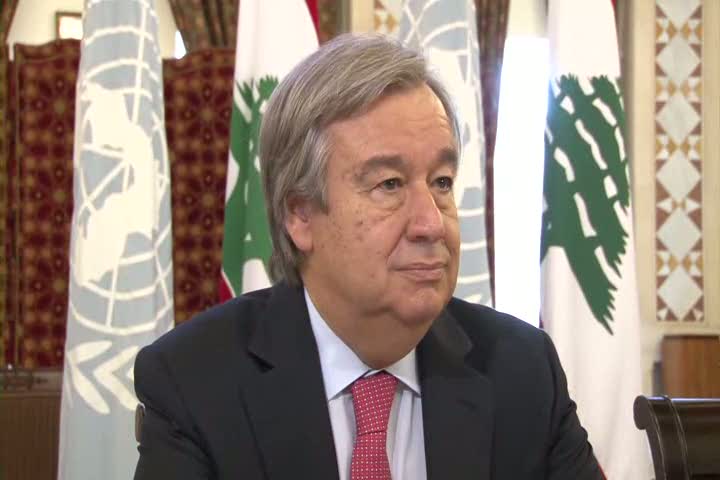

Lebanon: Guterres urges support
On the first leg of his World Refugee Day visit to the region, the UN High Commissioner calls for support for Lebanon.
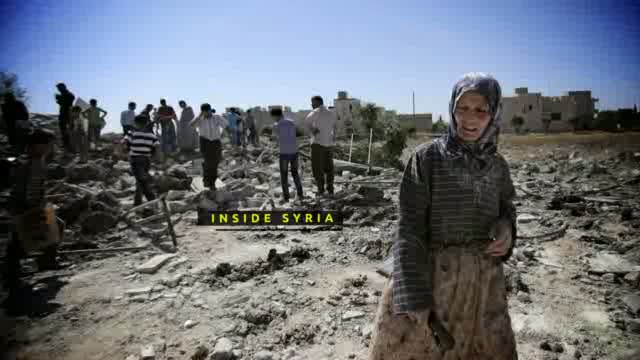

Syria Appeal: Billions Needed
More than 100 humanitarian organizations, including the UN refugee agency, appeal for more than US$4 billion to help millions of Syrians.
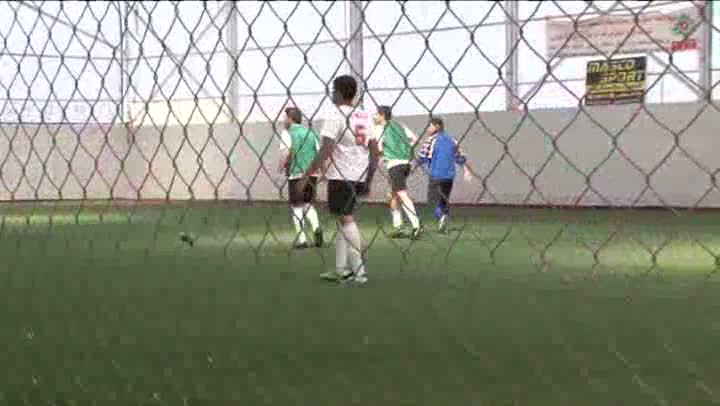

Lebanon: Keep on Playing
A Syrian refugee, once a national player, revives his dream of playing and coaching football.
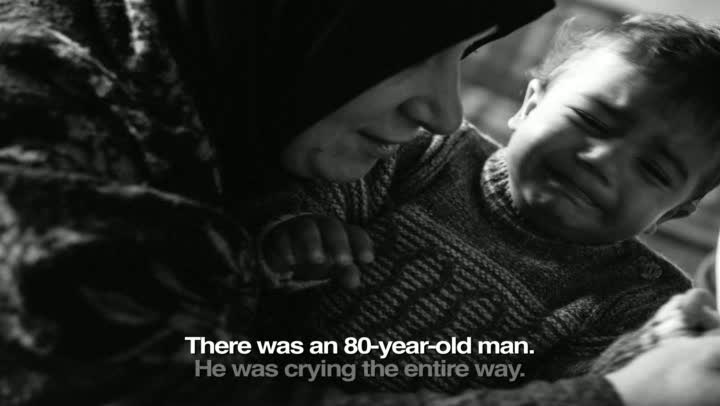

Lebanon: A widow's welcome
A refugee family finds shelter, and the kindness of strangers, in Lebanon
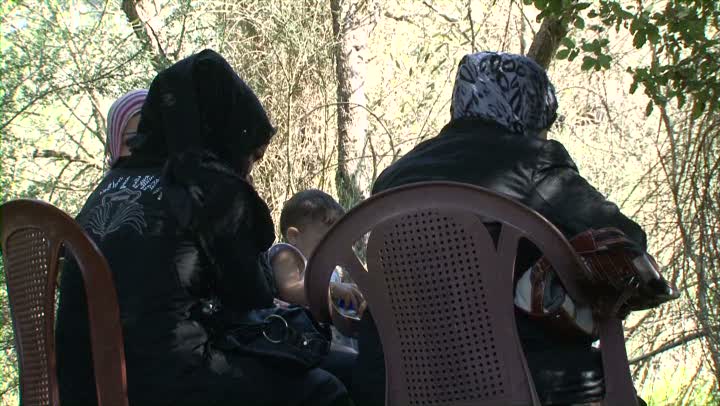

Lebanon: Guterres Visits Syrian Refugees
On the second anniversary of the Syrian conflict, UN High Commissioner for Refugees António Guterres highlights the challenges facing Syrian refugees in Lebanon.
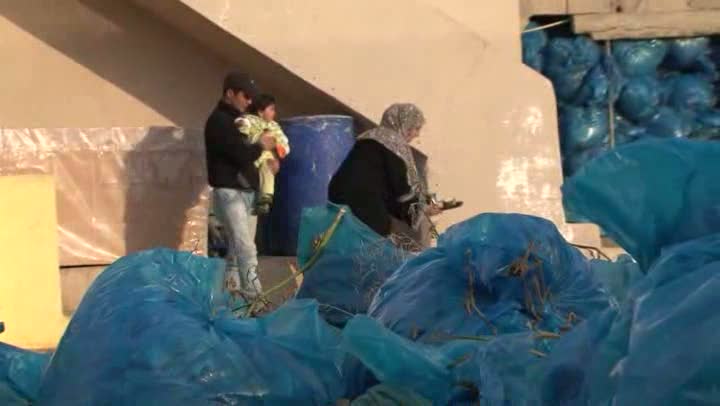

Lebanon: Living in Exile
Syrian refugees in Lebanon are registering in increasing numbers, helping them to get vital assistance.
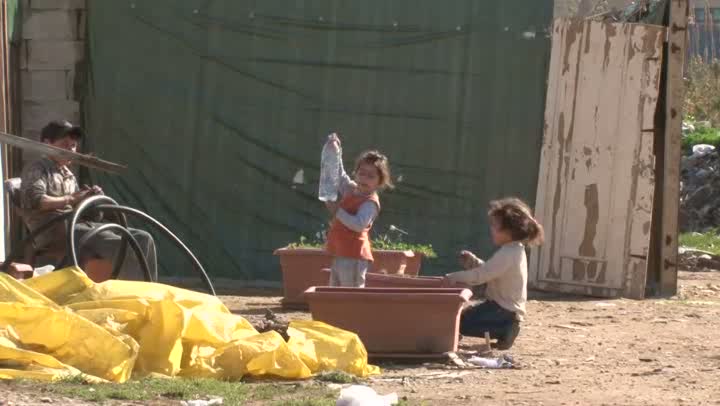

Lebanon: Desperately Seeking Shelter
Syrian refugees in Lebanon struggle to find affordable places to live.
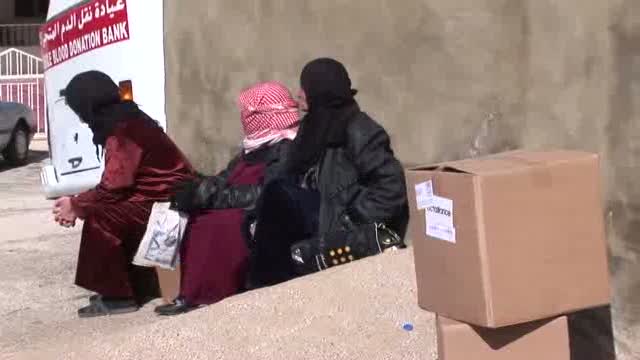

Lebanon: Helping the Refugees
UNHCR and its partners works to help both Syrian refugees and the host communities who have taken them in.
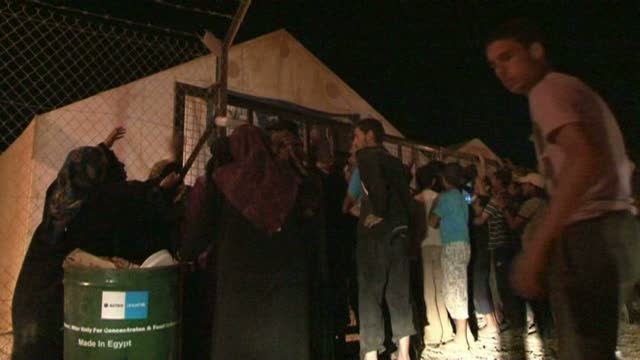

Three Conflicts - Three Crises
UNHCR says a multitude of new refugee crises in Africa and the Middle East are stretching its capacity to respond.
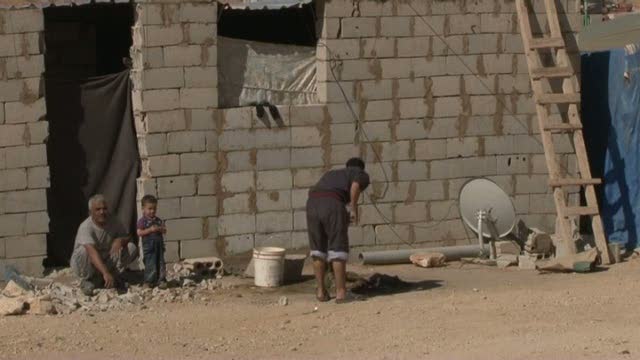

Lebanon: Bekaa Valley Shelter
Refugees continue to flee to neighbouring countries to escape the bitter conflict in Syria. But in Lebanon space is an issue, especially in the Bekaa Valley.
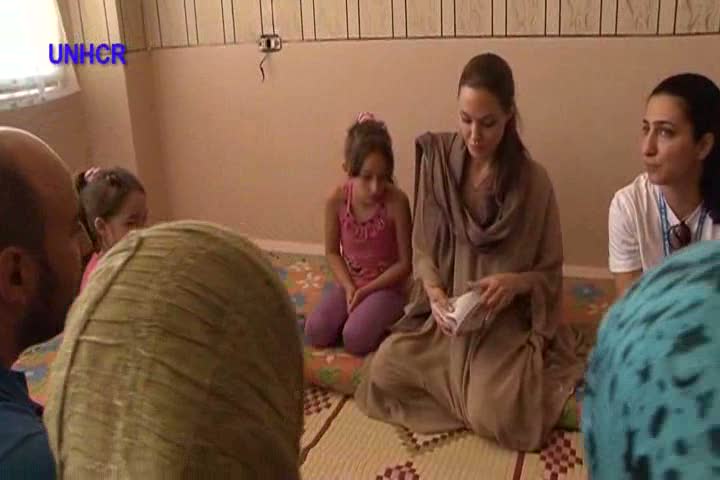

Lebanon: Angelina Jolie Meets Syrian Refugees
UNHCR Special Envoy Angelina Jolie and the refugee agency's chief, António Guterres, talk to Syrian refugees in Lebanon's Bekaa Valley.
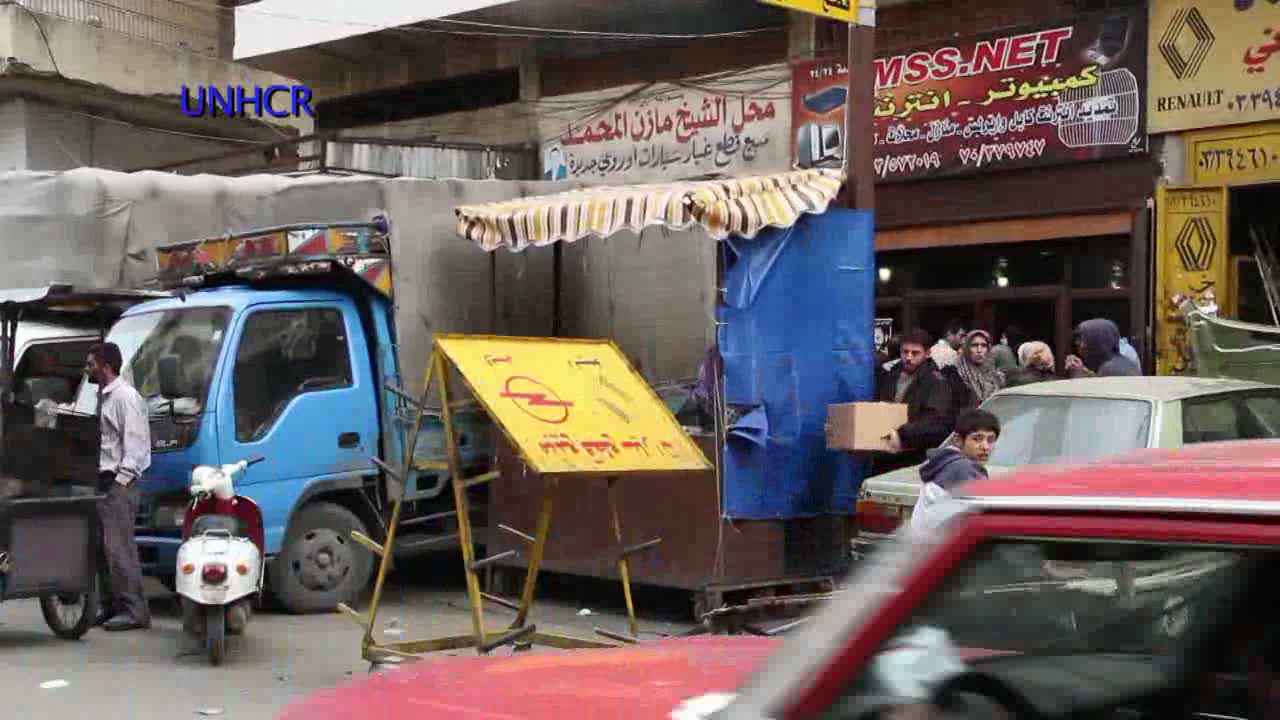

Lebanon: Help for the Refugees
In northern Lebanon, Syrian refugees are given essential assistance by UNHCR and local communities.
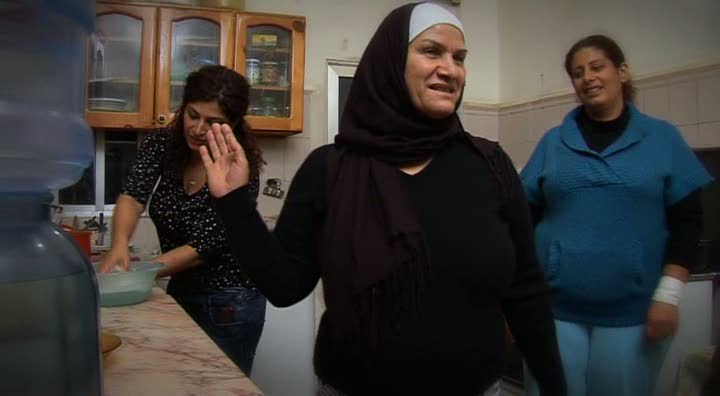

Zeinab and Manal
Zeinab and Manal: "It is an obstacle to everything: marriage, work... everything."
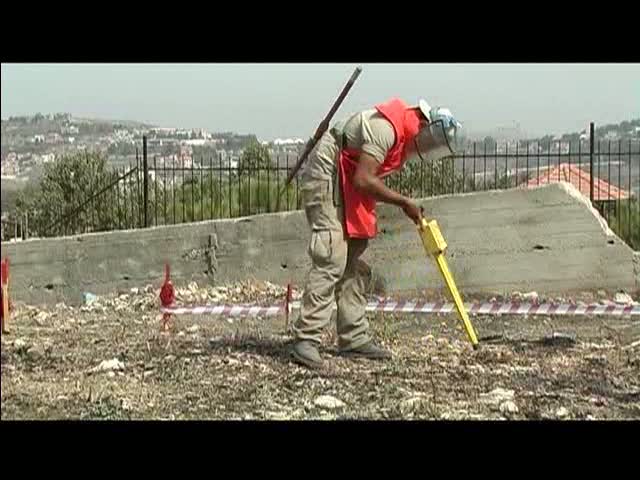

Nansen Award Announcement 2008
The UN refugee agency has announced the winner of the 2008 Nansen Refugee Award. The prestigious award goes to Chris Clark, the head of the UN Mine Action Coordination Centre in southern Lebanon, and his team of international and Lebanese mine clearers.
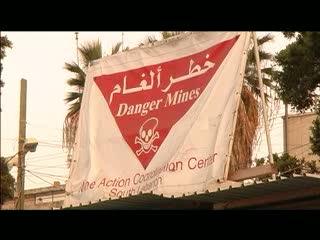

Nansen Refugee Award: Deminers Clear The Way Home In Lebanon
The 2008 Nansen Refugee Award recognizes the heroic work of Lebanese and international deminers in clearing southern Lebanon of tens of thousands of cluster munitions and allowing uprooted civilians to return home.




















